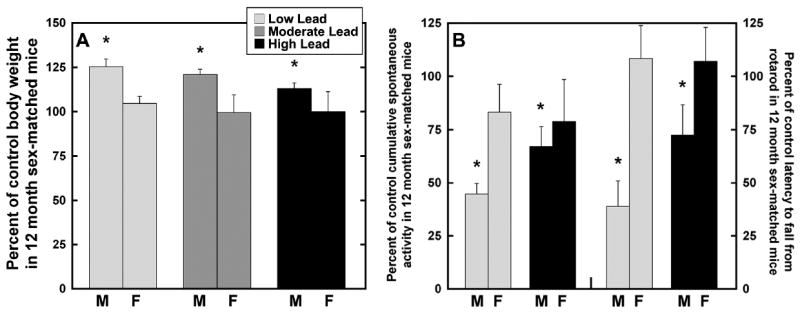Figure 2. Percent control body weight, cumulative spontaneous activity and motor coordination in 12 month-old male and female mice following human equivalent gestational lead exposure.

(A) Twelve month-old male mice in the low, moderate and high lead -dose groups weighed significantly more than age-matched controls: 26%, 21% and 13%, respectively. Gestational lead exposure produced nonmonotonic dose-dependent responses. There were no significant treatment-related differences in body weigh in female mice. (B) Twelve month-old male mice in the low and high lead -dose groups exhibited significantly less cumulative spontaneous activity than age-matched controls: -52% and -35%, respectively. The mean latency to fall from the rotarod significantly decreased in 12 month-old males in the low and high lead -dose groups compared to age-matched controls: -61% and -28%, respectively. Gestational lead exposure produced curvilinear dose-dependent responses. There were no significant treatment-related differences in cumulative spontaneous activity or mean latency to fall from the rotarod in female mice. *p<0.05 compared to sex-matched controls.
